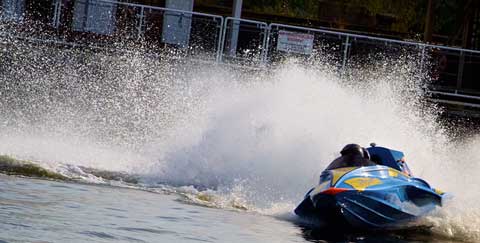
Safety skills and preparation should be a major component of every boat owners' inventory before you launch your boat. Unfortunately, there are far too many cases of ill-prepared captains who are not ready to take on a medical emergency when on the water. The situation becomes even direr when out to sea on deep sea fishing trips or particularly remote lakes when the closest medical professional can be several hours away. Preparing for the worst is part of making sure that everyone returns to shore safely and can go on to experience the joys of boating another day.
As part of this preparation, getting a first aid kit and a medical kit ready to use and keeping it on your vessel should be a high priority. But for those who are just starting to research safe boating habits, it can be difficult to know what supplies to keep on hand.
The level of federal regulations dealing with equipment requirements that may impact you as a boat owner is dependent upon several factors. While first aid kits aren't typically associated with federally mandated equipment regulations, they are still a common-sense piece of your boat that you should not leave shore without.
While often used interchangeably, a first aid kit differs from a medical kit in several ways. A first aid kit typically is used to address minor medical issues. Scrapes, minor sprains, sunburns, and cuts can typically be addressed with a first aid kit consisting of only the essentials. Recently, modular first aid kits have become more increasingly popular. A modular first aid kit consists of smaller packs designed to deal with certain specific problems. For example, one pack of the first aid kit may be designed to deal with "cuts & abrasions." Such a pack could consist of bandages, sterile dressing, nitrile gloves, adhesive bandages, and medical tape. The freedom to only remove one section of a first aid kit means you reduce the time it takes to find the right supplies and decreases the odds that you'll contaminate any sterile supplies that are not needed for the first aid procedure you intend to do.
A medical kit, on the other hand, is typically designed to deal with severe medical issues that would not be addressable with a simple first aid module. If a passenger is unfortunate enough to suffer a serious injury as the result of a boating accident, a medically trained individual should be able to use the more extensive supplies in the medical kit to stabilize the person until they can be moved to an appropriate medical facility. Having a medical kit available on your vessel is especially important if you must travel over 12 hours to return to an emergency room. The supplies that go into a medical kit range from basic medications such as acetaminophen to sterile, disposable scalpels, tourniquets, and more.
While this seems obvious for experienced boat owners, having a waterproof case will help prevent your medical supplies from being exposed to the elements and becoming unsanitary. Many pre-built medical kits feature waterproof cases, but if you're building your own, it may be helpful to use ziplock bags or vacuum sealing bags.
Modular design is a popular feature that is becoming more common with medical kits. As mentioned previously, the modular design can help reduce the amount of time it takes to access life-saving equipment.
Including guides on how to perform first aid or more advanced procedures is becoming more common for companies who sell medical supplies to include in a first aid kit or a marine medical kit. These guidebooks are helpful in reducing the amount that you must rely on your off-hand knowledge.
Despite the popularity of including literature on how to treat basic medical issues in first aid and medical kits, simply having the supplies on hand will not cause the person using them to become a medical genius suddenly. Preparing for the worst by receiving training in first aid and CPR can go a long way in an emergency.
While there are many reputable companies that are willing to create an "all-in-one" medical kit for your boating adventures, assembling one from the individual components purchased online is typically a much less expensive way to go. As long as you take precautions to ensure that the case you choose is waterproof, you can design the individual components of your first aid kit to be as modular as you please. Vacuum sealing individual modules and labeling them with a weatherproof label can be extremely cost-effective.
As a boat owner, it is your responsibility to ensure that your passengers return to shore safely. Without the preparation of training for an emergency or having the supplies to deal with an accident, you expose your passengers to unnecessary risk. Making memories on the water is something that everyone should enjoy. Having them ruined by being unprepared is something that we can all work to avoid. Contact us to learn more about the safety features of our floating docks!
By answering a few quick questions we will be able to tell you which dock or boat lift is the perfect fit for you.
Start Now! ▶